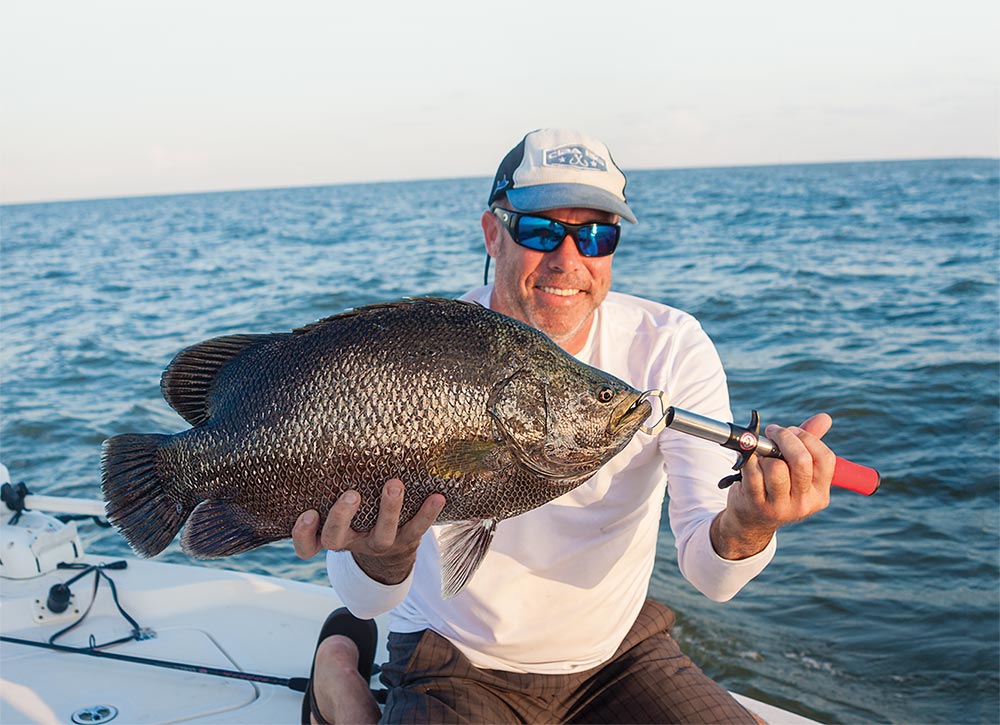
We were fishing nearshore waters between Biloxi and Gulfport, Mississippi, when Craig Brumfield, a marine artist and tripletail expert with dozens in the mid- to upper 20s to his credit, plucked a fat 12-pounder from behind a navigation marker. He’d tagged 97 tripletail in 2016, more than half exceeding 10 pounds, but he was still noticeably excited when I hoisted his latest catch aboard.
“They’re wary, strong and challenging, that’s why I love tripletail,” he said. “They also stack up at times, so it’s possible to catch more than one fish on a single spot.”
Tripletail Hangouts
Brumfield says a good day in Mississippi Sound, with its numerous channel markers, crab floats, mats of grass and other floating debris that are natural hiding spots for tripletail, offers 10 or more shots at the prehistoric-looking fish that often lie on their sides on the surface near structure, waiting to pounce on whatever is swept by the tide.
“I catch tripletail on mats of sargassum that wash in between the barrier islands, crab floats, every kind of marker and piling there is, hard hats, even dead birds floating,” he explains. “They often just stick their head underneath and forget their whole body isn’t always hidden, so you can still see them.”
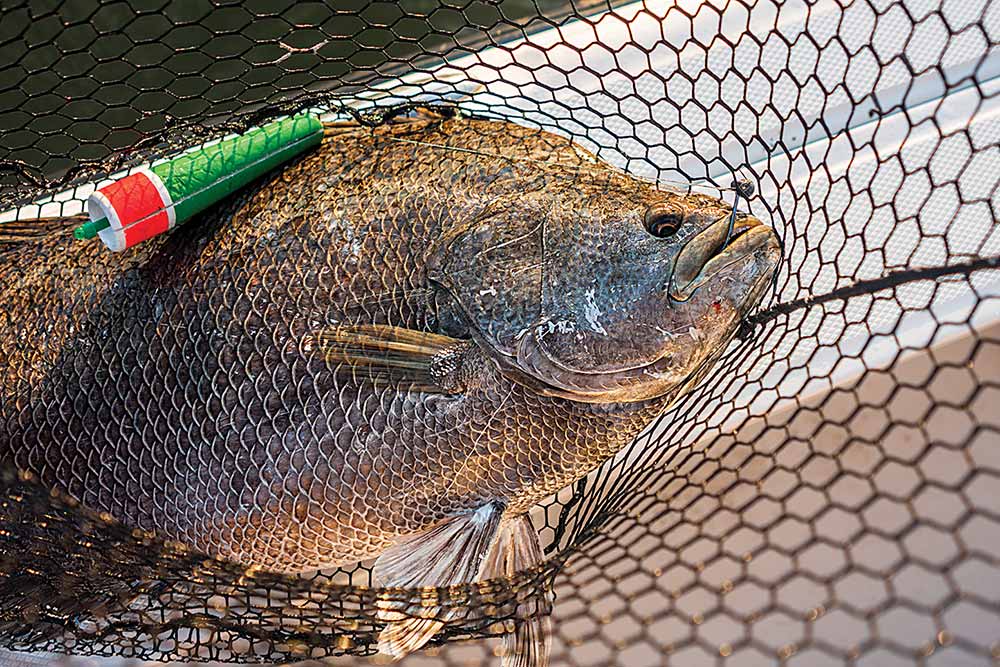
In the clear, green water, tripletail — called blackfish locally due to their dark brownish-black pigmentation — are often spotted right at or just below the surface. Having the sun behind you helps cut the glare to reveal silver flashes. But Brumfield cautions that if none are spotted, that doesn’t mean tripletail aren’t there. They often hover farther down in the water column, so he has adopted a sliding float rig to get the shrimp into the strike zone.
“If the depth is 12 to 15 feet, I set my sliding cork at 12 feet,” Brumfield says. “If I get bit right away, they’re close to the surface. But tripletail are lazy. They wait and watch the shrimp slowly descend and may not eat until it finally hits the bottom, so you’ve got to know where the bait is in relation to that cork. You feel only a subtle bump when they inhale the bait.”
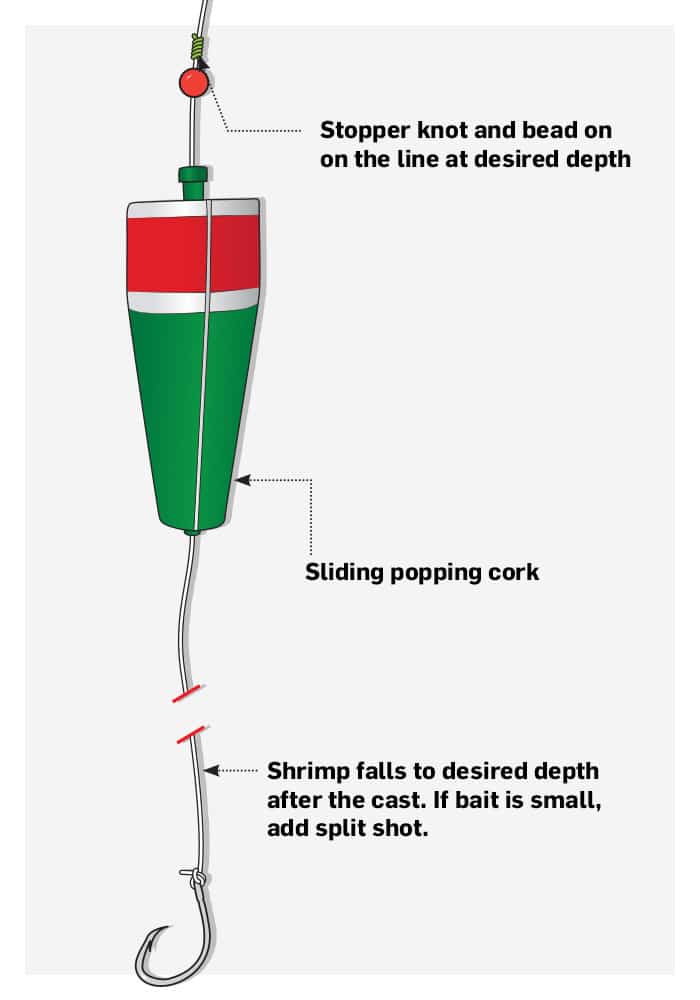
Rigging for Tripletail
Because of the threat of barnacles and the fish’s tendency to run around obstacles, Brumfield uses 60-pound braid tied directly to a short-shank 5/0 to 6/0 live-bait hook. He forgoes leaders to avoid multiple connections and because he believes the water clarity doesn’t usually warrant them. The shrimp is hooked in the middle of the tail so it dangles.
“The bigger fish have sharp gill plates and tough mouths, so I like to give ’em an extra strong tug on the hook-set and keep the rod tip low,” he says. “There’s very little room for mistakes. You’ve got to be aggressive and get the upper hand before they start jumping and running laps around that piling. I have been schooled by plenty of them.” Quick boat handling is also essential to help pull the fish away from the structure.
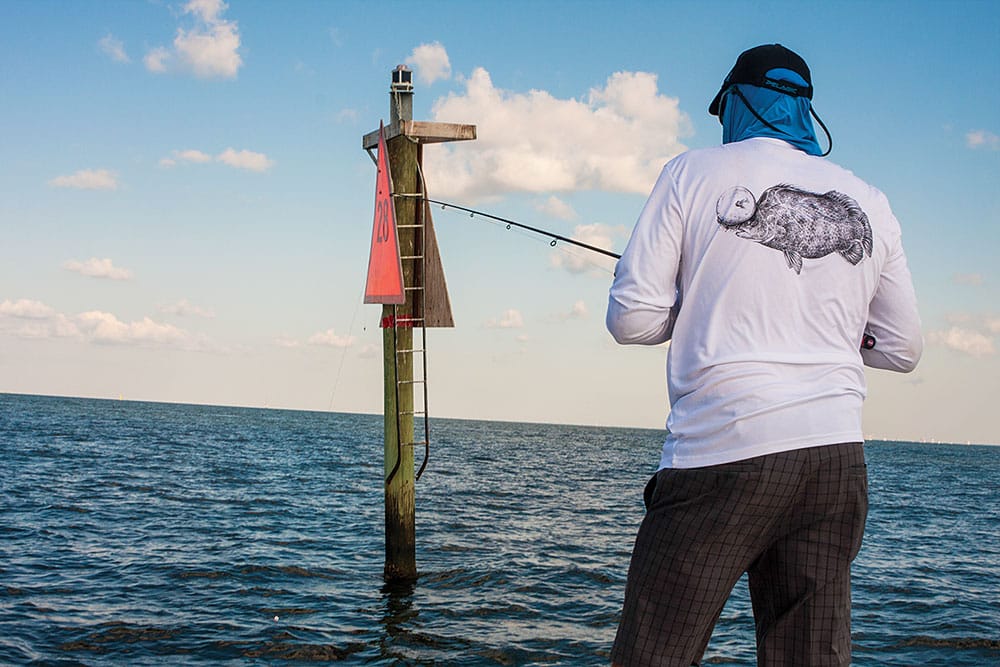
Season and Tides
According to Brumfield, Mississippi tripletail start appearing inshore by April, once the pecan trees start budding and southeast sea breezes bring sargassum in from offshore. Water temperatures of 70 degrees and above are the key. The fish will stick around throughout the summer and into early fall, but the first strong cold front chases them back into deeper water.
When it comes to tides, Brumfield likes an incoming but says slack water is the best, especially if it coincides with the peak solunar periods. In a strong current, tripletail hold on to the backside of a piling or buoy, which is why keeping the bait in that eddy behind the structure is ideal. He makes multiple casts on both sides of the structure before moving on.
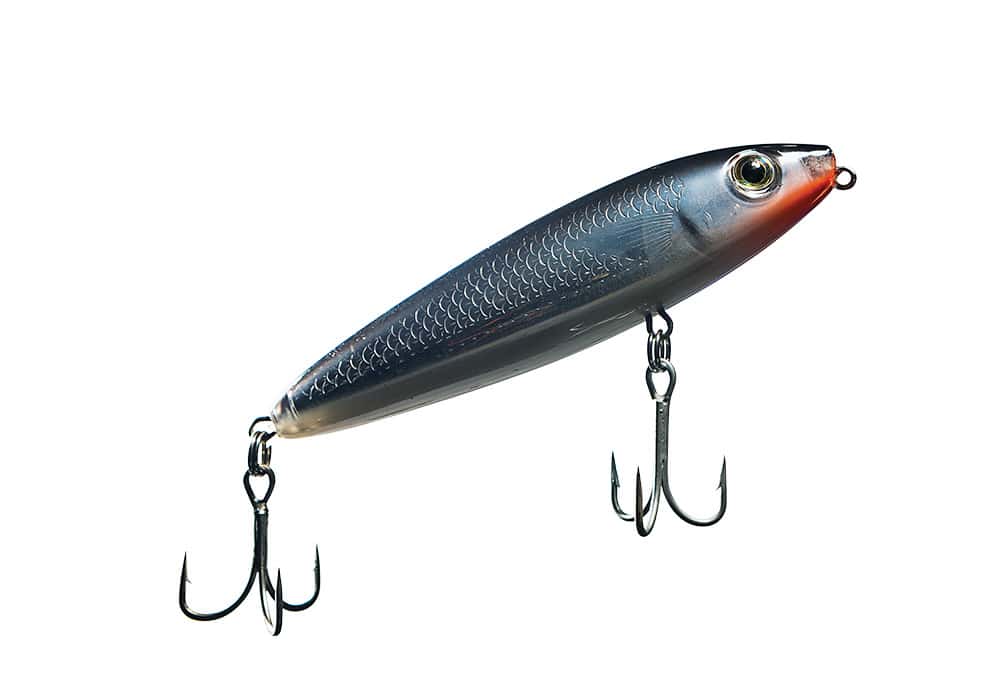
Bag and Tags
And while anglers are allowed to keep up to three tripletail 18 inches or longer in Mississippi, he keeps one or two now and then, and releases most after tagging them with nylon dart tags provided by the University of Southern Mississippi’s Gulf Coast Research Laboratory. When asked about his tagging efforts, he points to one tripletail he re-caught after tagging it two days earlier, as well as information derived from other tag returns, which suggests the fish use the Intracoastal Waterway as a regular migration route.
Fast Facts for Success for Catching Tripletail
Camouflage: Tripletail try to blend in with sargassum and other floating debris for safety and to ambush prey.
Slackers: Slack water between tides is when the fish are most active. Otherwise, look for them behind structure.
Go-round: Hooked tripletail often run around pilings and crab-trap ropes, requiring quick boat maneuvering.
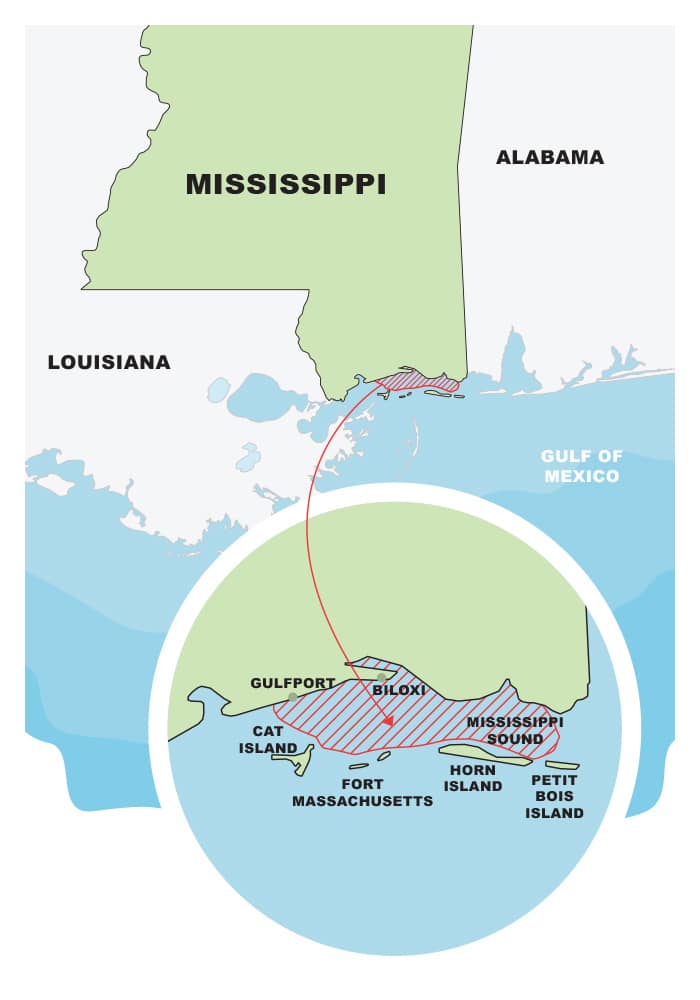
SWS Planner
What: Tripletail
When: May through early October
Where: Mississippi Sound, including Pascagoula, Biloxi, Gulfport and Pass Christian
Who: Tripletail fishing is well-suited for DIY anglers, but the following captains can shorten the learning curve:
Capt. Matthew Mayfield 228-326-7476
Capt. Steve Perrigan 228-217-0458
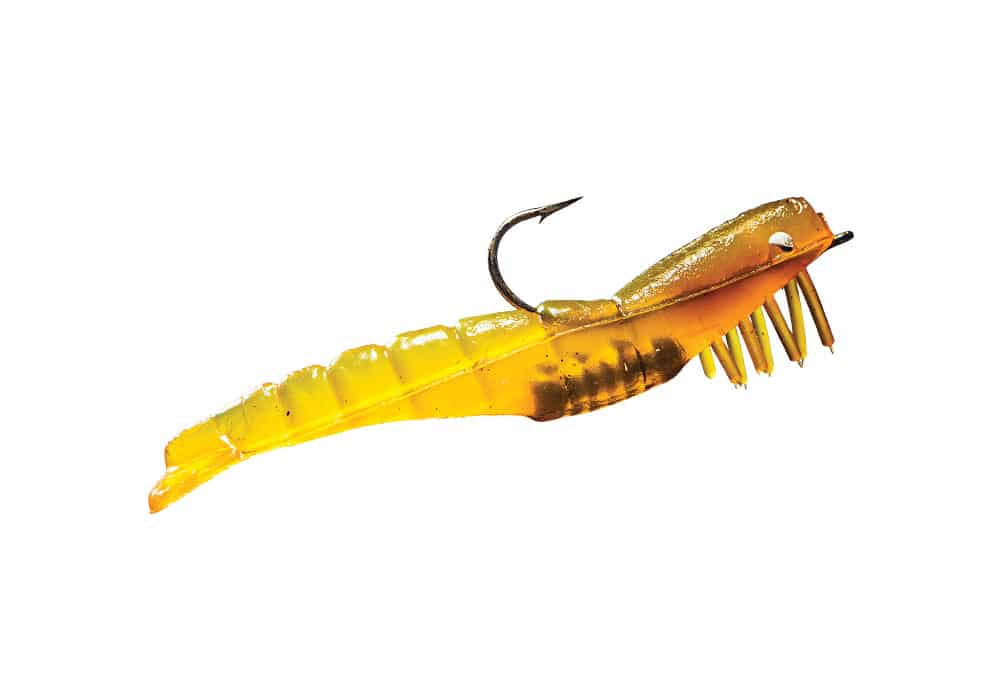
SWS Tackle Box
Rods: 7-foot, medium-action baitcasting or spinning
Reels: Medium conventional like the Shimano Tekota 500, or 5000-class spinning
Lines: 65-pound braid, no leader
Terminal tackle: 3- to 4-inch adjustable floats; 5/0 to 6/0 short-shank live-bait hooks
Lures: D.O.A. 1⁄4- to 1⁄2-ounce shrimp in natural colors; Rapala Skitter Walk, Heddon Super Spook
Bait: Large shrimp (live or fresh dead), finger mullet, squid









